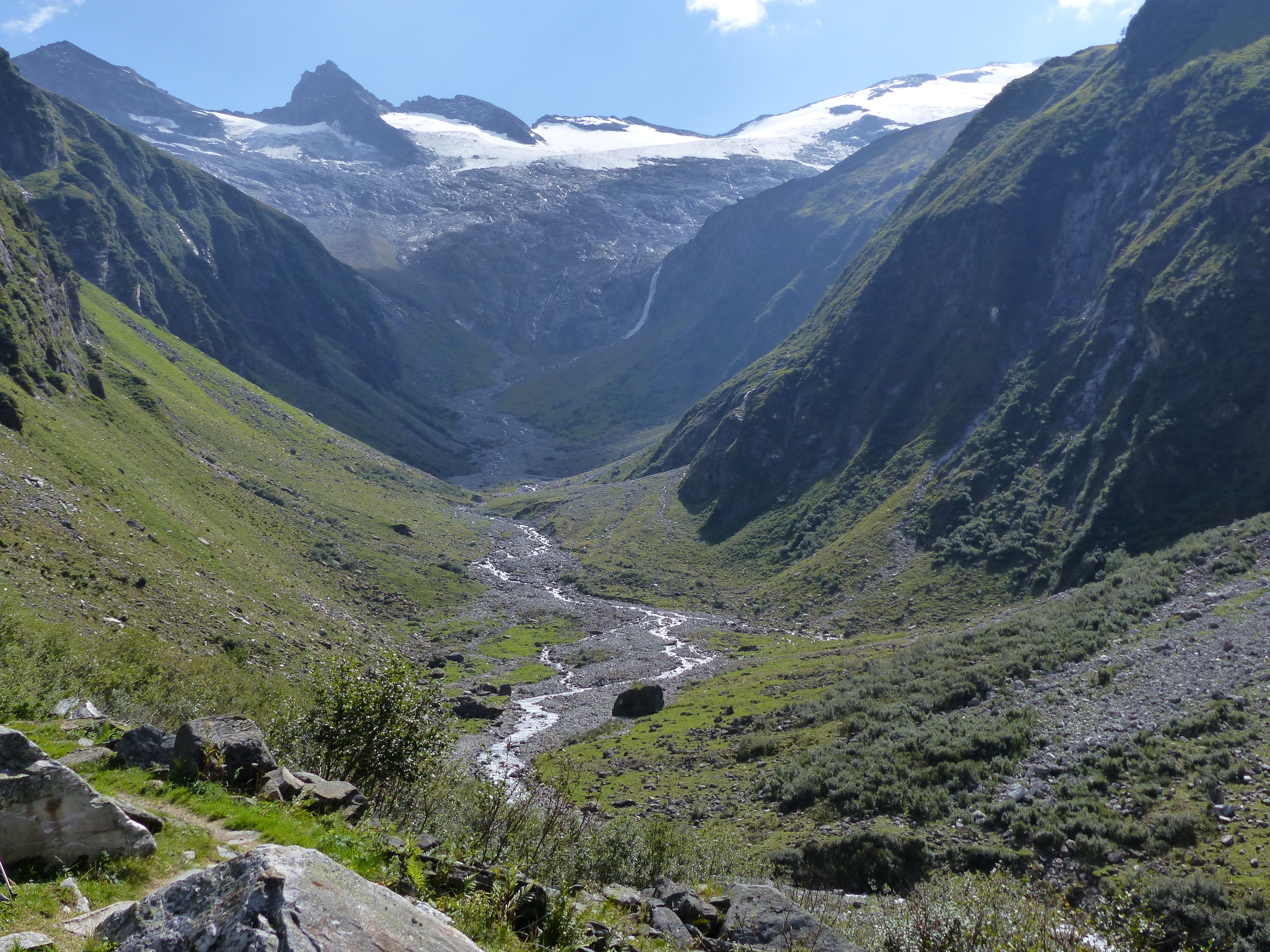Head of the valley on:
[Wikipedia]
[Google]
[Amazon]
 The head of the valley or, less commonly, the valley head, refers to the uppermost part of a
The head of the valley or, less commonly, the valley head, refers to the uppermost part of a
 The head of the valley or, less commonly, the valley head, refers to the uppermost part of a
The head of the valley or, less commonly, the valley head, refers to the uppermost part of a valley
A valley is an elongated low area often running between hills or mountains, which will typically contain a river or stream running from one end to the other. Most valleys are formed by erosion of the land surface by rivers or streams ove ...
.Leser (2005), p. 935.
Description
The head of a valley may take widely differing forms; for example, inhighland
Highlands or uplands are areas of high elevation such as a mountainous region, elevated mountainous plateau or high hills. Generally speaking, upland (or uplands) refers to ranges of hills, typically from up to while highland (or highlands) is ...
regions the valley often ends in a broad, evenly sloping hollow. The higher the head of the valley, the more likely it is to resemble the geomorphological shape of a cirque
A (; from the Latin word ') is an amphitheatre-like valley formed by glacial erosion. Alternative names for this landform are corrie (from Scottish Gaelic , meaning a pot or cauldron) and (; ). A cirque may also be a similarly shaped landf ...
. In glacial valley
U-shaped valleys, also called trough valleys or glacial troughs, are formed by the process of glaciation. They are characteristic of mountain glaciation in particular. They have a characteristic U shape in cross-section, with steep, straight s ...
s or trough valleys, it may be referred to as the trough head
U-shaped valleys, also called trough valleys or glacial troughs, are formed by the process of glaciation. They are characteristic of mountain glaciation in particular. They have a characteristic U shape in cross-section, with steep, straight s ...
or trough end
U-shaped valleys, also called trough valleys or glacial troughs, are formed by the process of glaciation. They are characteristic of mountain glaciation in particular. They have a characteristic U shape in cross-section, with steep, straight s ...
.Leser (2005), p. 978.
In mountains with predominantly crystalline rock
A crystal or crystalline solid is a solid material whose constituents (such as atoms, molecules, or ions) are arranged in a highly ordered microscopic structure, forming a crystal lattice that extends in all directions. In addition, macros ...
the heads of the valleys are generally very wet, sometimes bog
A bog or bogland is a wetland that accumulates peat as a deposit of dead plant materials often mosses, typically sphagnum moss. It is one of the four main types of wetlands. Other names for bogs include mire, mosses, quagmire, and muskeg; a ...
gy and often support lush alpine meadow
Alpine tundra is a type of natural region or biome that does not contain trees because it is at high elevation, with an associated harsh climate. As the latitude of a location approaches the poles, the threshold elevation for alpine tundra gets ...
s, whilst those made of limestone
Limestone ( calcium carbonate ) is a type of carbonate sedimentary rock which is the main source of the material lime. It is composed mostly of the minerals calcite and aragonite, which are different crystal forms of . Limestone forms w ...
are usually dry and covered in talus or gravel
Gravel is a loose aggregation of rock fragments. Gravel occurs naturally throughout the world as a result of sedimentary and erosive geologic processes; it is also produced in large quantities commercially as crushed stone.
Gravel is classifi ...
. Where there has been ice age
An ice age is a long period of reduction in the temperature of Earth's surface and atmosphere, resulting in the presence or expansion of continental and polar ice sheets and alpine glaciers. Earth's climate alternates between ice ages and gre ...
glaciation, the valley bottoms are modified by moraine
A moraine is any accumulation of unconsolidated debris ( regolith and rock), sometimes referred to as glacial till, that occurs in both currently and formerly glaciated regions, and that has been previously carried along by a glacier or ice sh ...
s and mountain lakes are common.
See also
*Structural basin
A structural basin is a large-scale structural formation of rock strata formed by tectonic warping of previously flat-lying strata. They are geological depressions, the inverse of domes. Elongated structural basins are also known as syncline ...
* U-shaped or trough valley
* Landform
A landform is a natural or anthropogenic land feature on the solid surface of the Earth or other planetary body. Landforms together make up a given terrain, and their arrangement in the landscape is known as topography. Landforms include hills, ...
* Valley step
References
Bibliography
* Leser, Hartmut, ed. (2005). ''Wörterbuch Allgemeine Geographie'', 13th ed., dtv, Munich, {{ISBN, 978-3-423-03422-7. Geography terminology